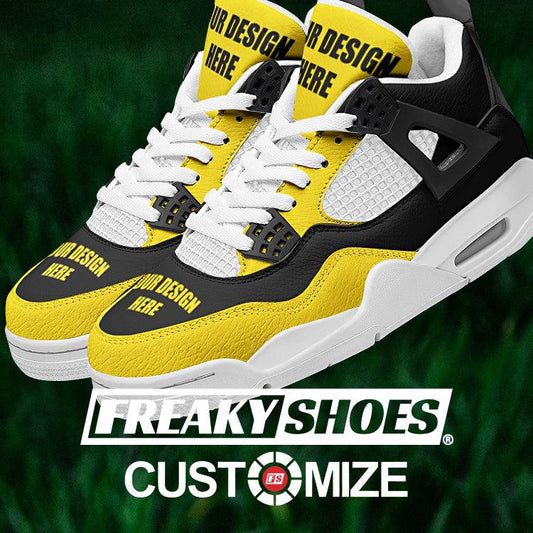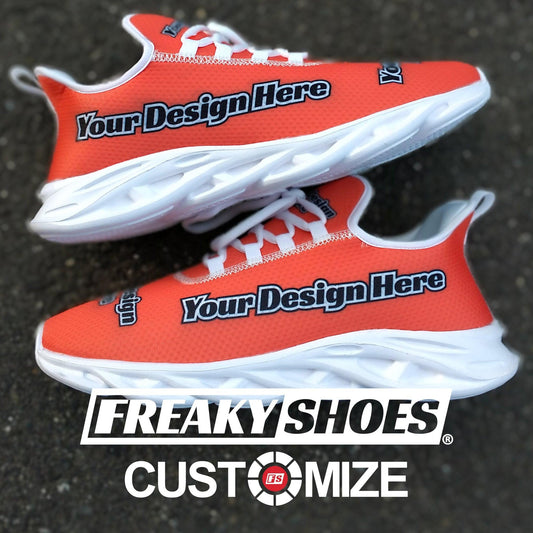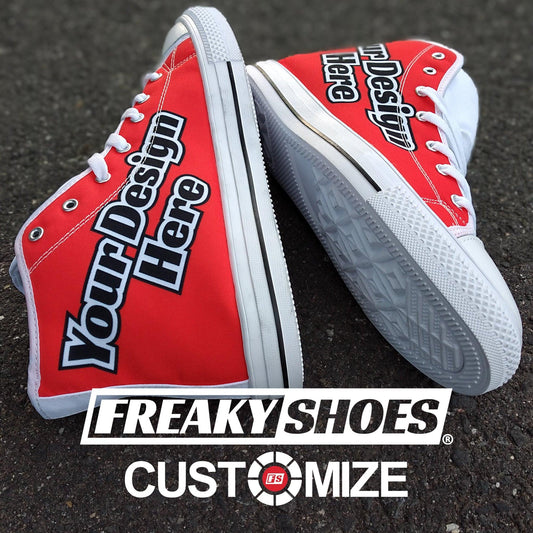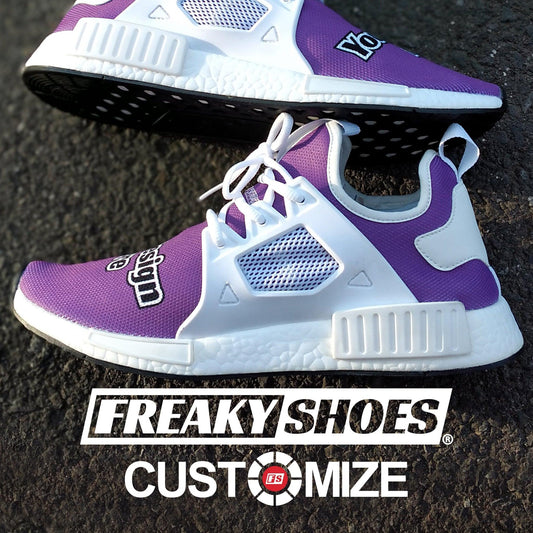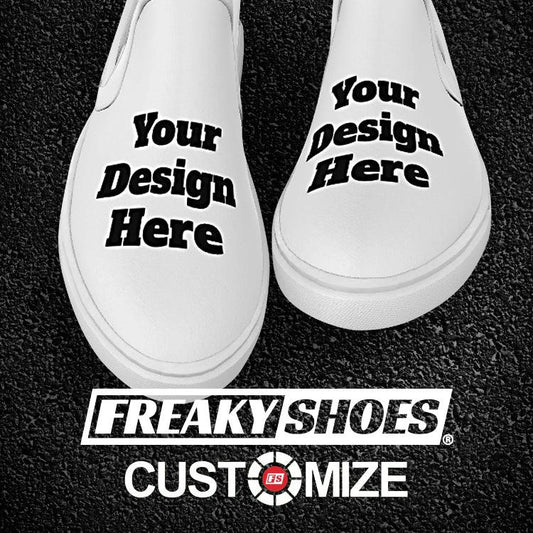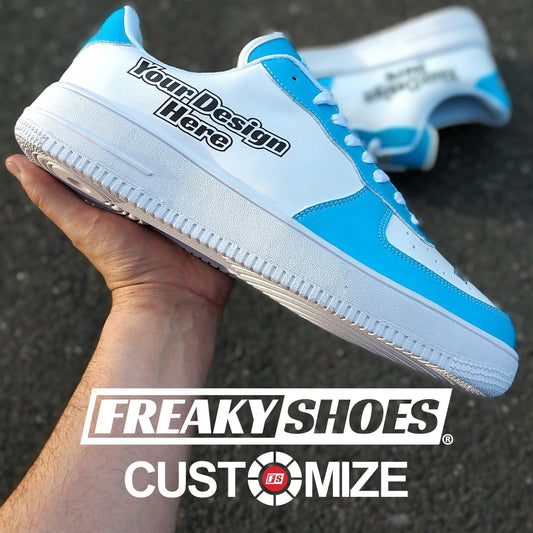We understand that determining the cost of sneakers can be challenging for you because a lot of factors are involved. Still, you can make an estimate by analyzing different conditions (which is what we’ve discussed here).
How?
To determine the cost of the sneaker, you should first add material costs, labor expenses, and manufacturing overheads. After this, consider marketing charges and consumer demand.
But how can you do all of this? Keep reading to know!
Key Statistics
- Average Sneaker Price: The average price of sneakers has been on the rise. In 2023, the average sneaker price was approximately $63.23, up from $60.75 in 2022, and $57.56 in 2021.
- Revenue per Person: In 2023, the sneaker industry is projected to generate around $9.86 per person in revenue. This figure represents global spending on sneakers, showing a consistent pattern in consumer expenditure over the years.
- Market Share of Top Brands: In the worldwide sneaker market, Nike leads with an 18% market share, followed by Jordan (11%) and Adidas (9%). Other brands like Skechers, Vans, and Converse also hold significant shares. They all contribute to the dynamic market landscape.
How To Determine the Cost of Sneakers? (Explaining Everything)

You can determine the cost of sneakers by analyzing 11 factors. We’re now discussing them one by one with examples.
Factor #01: The Expense of Raw Materials
The first thing to do when determining the sneaker cost is to consider the material cost. Note that top-quality materials are costly, which is why branded shoes are expensive.
Here's a breakdown:
- Textiles and Leathers: The choice of fabric greatly influences the cost. For example, synthetic mesh or premium leather can hike up the price. But rubber and foam are cheap. That’s why sneakers manufactured with them cost less.
- Soles and Insoles: The sole material is another factor. It’s clear that if a company uses more advanced cushioning technology, like memory foam insoles or air-cushioned soles, the price will be higher.
- Laces and Hardware: Even small details like laces, eyelets, and other hardware can affect the cost. We have noted that it usually happens if they are custom-designed or made from higher-end materials.
- Packaging: We often overlook this, but the box and packaging material also contribute to the cost. How? Well, a well-designed box adds a few dollars to the overall expense.
Factor #02: Design and Development Costs
After materials, we have found that the next big chunk of the cost comes from the design and development phase.
- Design Process: It starts with the designers, who need to be paid for their creativity and expertise. The more renowned the designer, the higher the design costs can be.
- Prototyping: Once a design is finalized, prototypes are made. This stage is all about trial and error. However, each prototype cost money.
- Testing for Quality and Comfort: We all know that a sneaker must be comfortable and durable. That’s why brands also invest in rigorous testing to ensure the sneaker holds up to different conditions.
Factor #03: Labor Costs
You have already read how a company has to pay experts to design comfortable sneakers. In addition to them, there is a skilled workforce that does the manufacturing. They start from crafting the shoes to the final inspection.
Their salaries are also reflected in the price.
Similarly, financial experts have told us that working conditions also play a part here. Brands that prioritize ethical labor practices and better working conditions have to spend more money. You can now guess that this influences the final retail price.
Factor #04: Manufacturing Overheads
We always call manufacturing overheads the “hidden costs.” Here are the common ones:
- Factory Maintenance: It includes rent, utilities, cleaning, and equipment maintenance.
- Production Line Tools and Equipment: The cost of purchasing specialized machinery or parts.
- Safety and Compliance: Ensuring factories meet safety standards and comply with environmental regulations can also be costly. But these are critical for sustainable and responsible manufacturing.
Factor #05: Brand and Marketing
Another big part of finalizing costs is brand and marketing.
- Brand Value: The reputation and recognition of a brand are huge factors. Popular brands often charge a premium due to their established market presence. However, newer companies have to set their price lower than others.
- Marketing Campaigns: Some brands spend millions on marketing campaigns and promotional events. Ultimately, they try to cover the cost by raising their prices.
Factor #06: Distribution and Logistics
Now, it’s one of the most crucial cost factors because many companies get it wrong.
- Storage and Warehousing: Safely storing sneakers before they are shipped is super important. However, it cost money. Still, it’s worth it because proper warehousing ensures that the sneakers remain in top condition.
- Transportation: The cost of transporting sneakers from the manufacturing site to retail stores or directly to customers is also high. It includes the cost of packaging for shipment and the transportation fees (whether by land, sea, or air).
- Customs and Duties: For international brands, there are often additional costs in the form of customs duties and taxes.
Factor #07: Retail Markup
Retail markup is a critical component in the pricing of sneakers. In our research, we discovered that it affects in two ways:
- Covering Costs: Retailers add a markup to the wholesale price to cover their operational costs. These include store rent, employee wages, utilities, and other overheads.
- Profit Margin: Apart from covering costs, we have also found out that the markup also includes the retailer's profit margin. This is how retailers make money and continue to operate.
Factor #08: Limited Edition or Collaboration Models
Limited edition and collaboration sneakers are priced higher, and it’s understandable why. They are manufactured in restricted quantities, which means not everyone can purchase them.
Similarly, collaborations between brands and celebrities are all about making one-of-a-kind sneakers.
Factor #09: Technological Features
Now, let us discuss Technological innovations and their effects on the final price.
- Innovative Materials: Using advanced materials for sneakers is expensive. Such things include waterproof membranes, carbon fiber plates for improved propulsion, or temperature-regulating fabrics.
- Performance Enhancing Features: Many sneakers come with features designed to enhance athletic performance. This could be air-cushioned soles for better impact absorption, energy-returning midsoles, or custom-fit technology (which is costly).
- Sustainable Technologies: Recycled materials, biodegradable components, and low-impact manufacturing processes can be more expensive than traditional methods.
- Smart Sneakers: Some sneakers now come equipped with integrated electronics, such as fitness trackers or LED displays. The development and integration of these technologies into footwear add to the cost.
Factor #10: Economic Factors
There are many economic factors you should consider before determining the cost of sneakers. It usually involves three things:
- Inflation: General inflation rates affect the cost of materials, labor, and transportation. The price of the final product hikes up when these things get costly.
- Currency Exchange Rates: For global brands, fluctuations in currency exchange rates can significantly impact costs. A stronger or weaker dollar, for instance, affects how much a company pays for materials and labor overseas, which in turn influences the price of sneakers in different markets.
- Trade Policies and Tariffs: Import duties on materials or finished products can add to the cost.
Factor #11: Consumer Demand and Trends
The last main factor that decides the sneaker price is consumer demand and trends. They impact pricing in many ways:
- Trendsetting Designs: When a particular design or style becomes trendy, the demand for that style can skyrocket. Brands may capitalize on this by increasing prices.
- Cultural Phenomena: Sometimes, a sneaker becomes part of a cultural trend. The 'sneakerhead' culture eventually increases the total cost.
- Secondary Market Dynamics: Limited editions or rare releases can fetch prices many times higher than the original retail price.
- Seasonal Variations: Just like in the fashion industry, certain styles of sneakers are more popular in specific seasons. For example, lighter, more breathable designs are priced higher in the summer months. In another guide, we have explored the best footwear for beaches in summer.
Now, let us give you some cost examples.
How Much Do Popular Sneakers Cost?
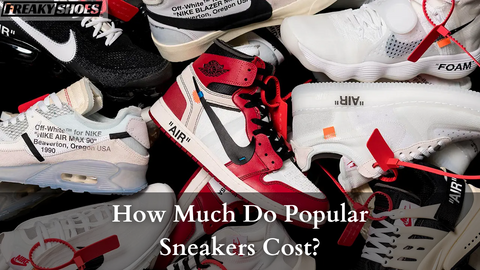
Popular brands finalize the cost of sneakers after considering the 11 factors we have just discussed. Here is their price range:
|
Brand |
Approximate Price Range |
|
Nike |
$70 - $250 |
|
Adidas |
$60 - $200 |
|
Jordan |
$90 - $300 |
|
New Balance |
$80 - $200 |
|
Converse |
$50 - $100 |
|
Puma |
$50 - $150 |
|
Reebok |
$60 - $150 |
|
Under Armour |
$60 - $150 |
|
Vans |
$50 - $120 |
|
ASICS |
$70 - $180 |
How Much Popular Shoes Are Re-Sold?
Resale prices can vary, because it depends on:
- Model's rarity
- Demand
- Condition.
But we’ve found that they are usually sold in this price range:
|
Brand |
Approximate Resale Price Range |
|
Nike |
$100 - $1000+ |
|
Adidas |
$80 - $800+ |
|
Jordan |
$120 - $2000+ |
|
New Balance |
$100 - $600+ |
|
Converse |
$70 - $400+ |
|
Puma |
$60 - $300+ |
|
Reebok |
$80 - $350+ |
|
Under Armour |
$70 - $250+ |
|
Vans |
$60 - $300+ |
|
ASICS |
$80 - $400+ |
Final Words
In a nutshell, you can determine the cost of sneakers by analyzing some specific factors. These are raw materials, labor expenses, overheads, etc. Similarly, limited edition shoes are sold at a higher price than usual. Sometimes, seasonal fluctuations can also hike up the cost!











